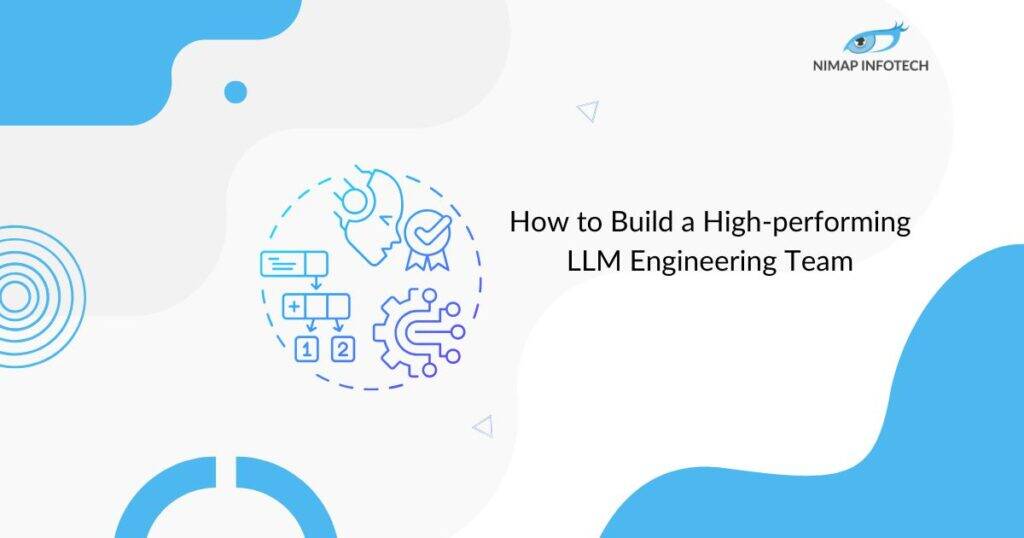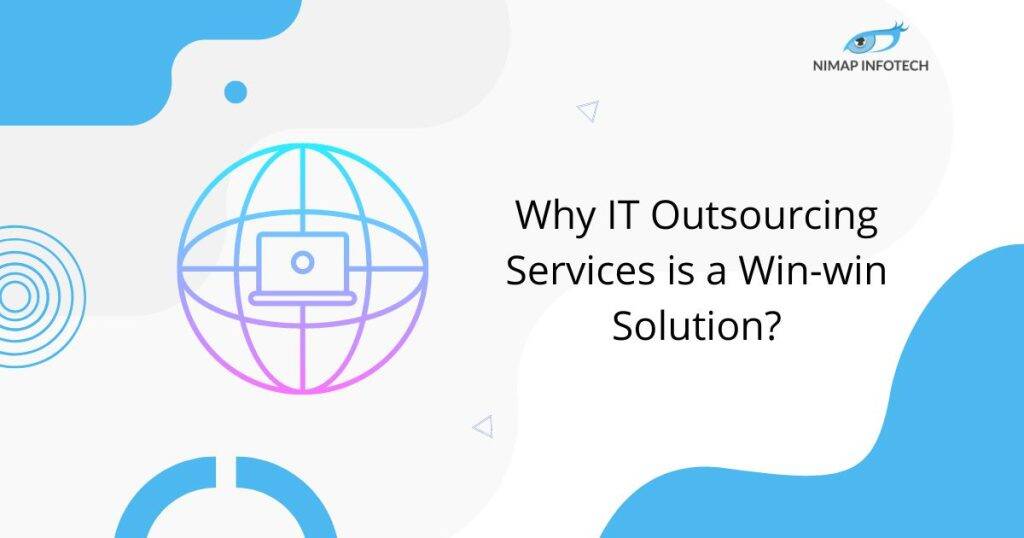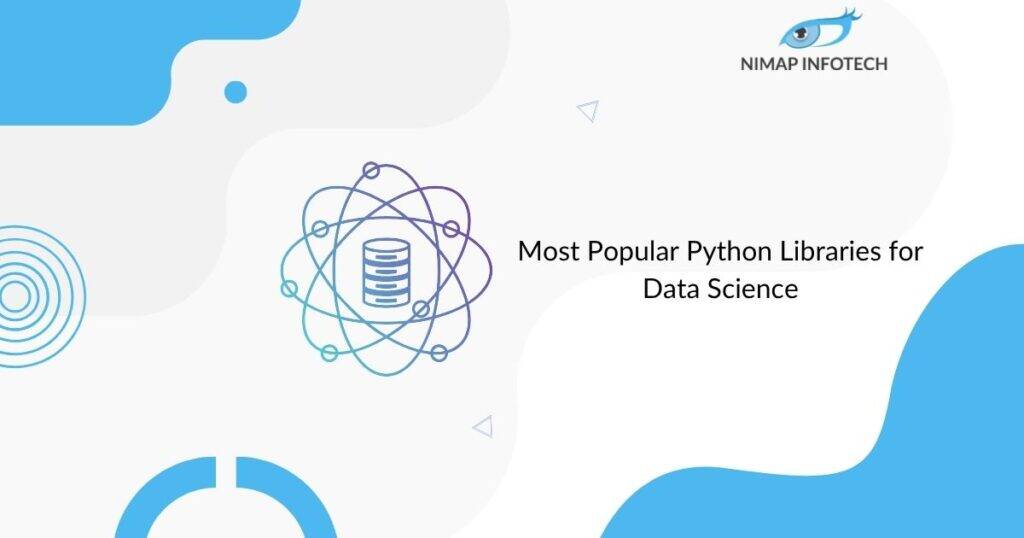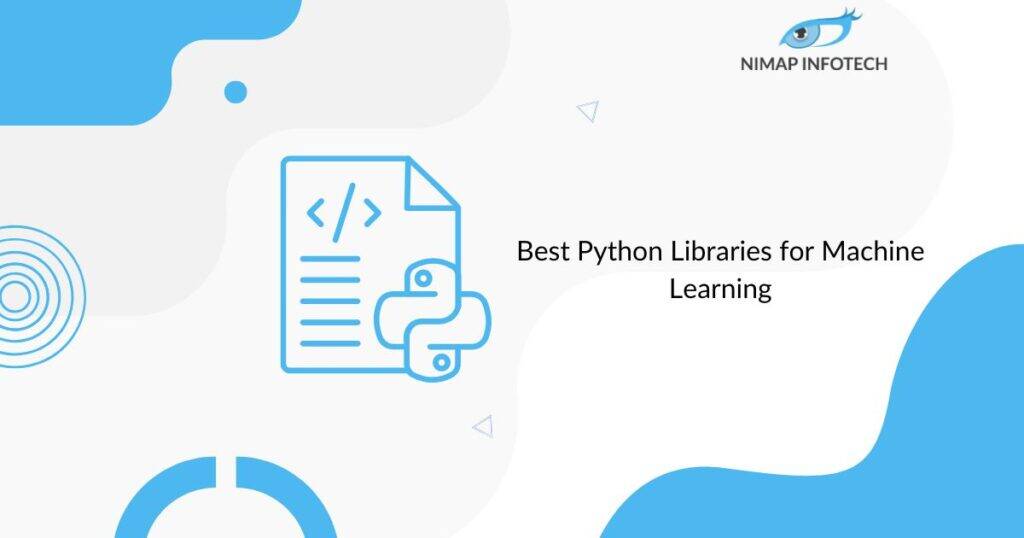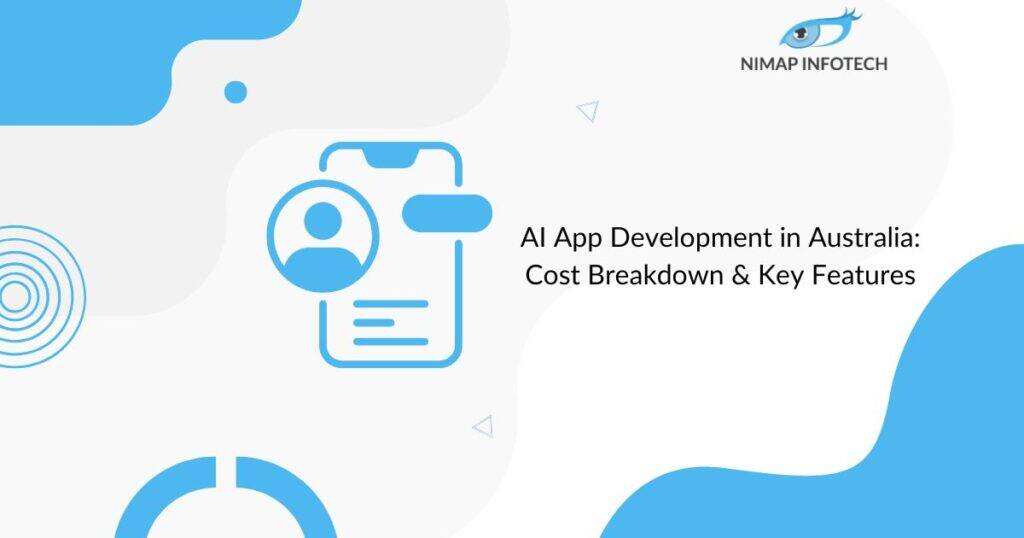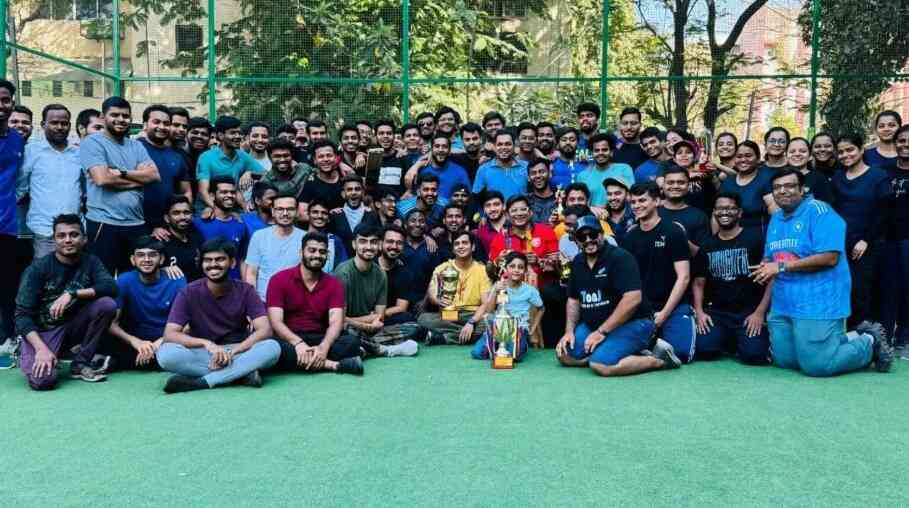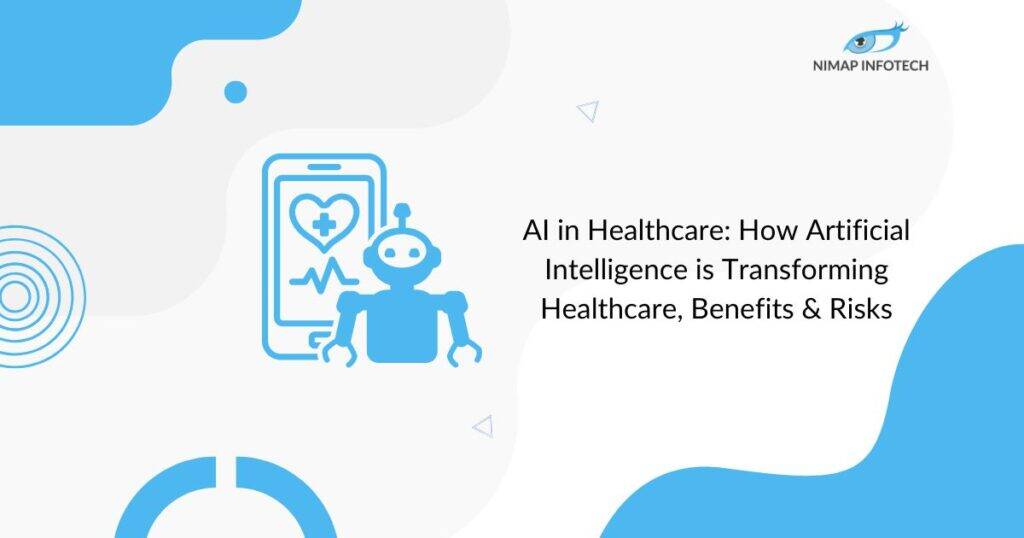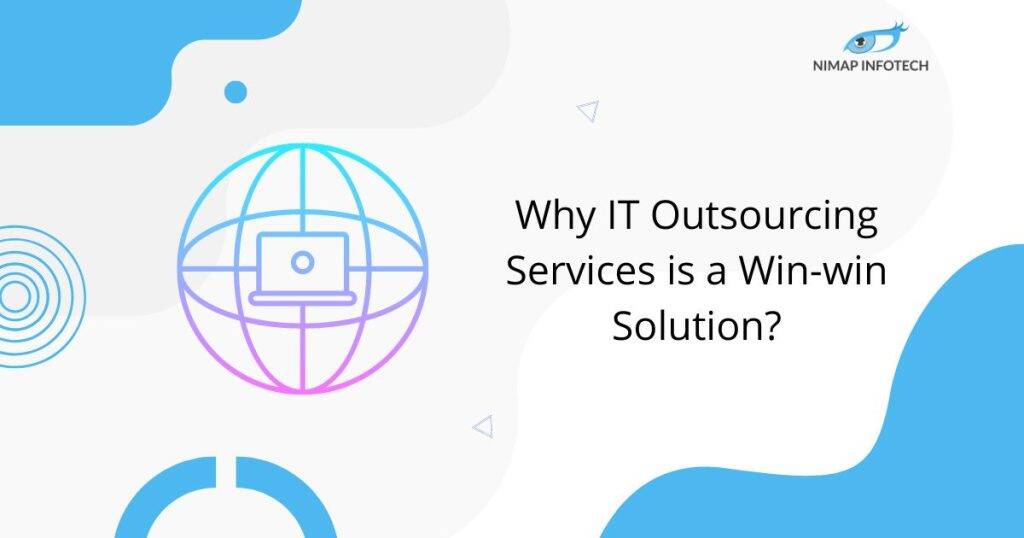Natural Language Processing (NLP) is experiencing unprecedented growth, with forecasts projecting the market to reach $63.37 billion by 2030. As a result, businesses are rapidly seeking LLM experts to stay ahead in the evolving AI landscape. At Nimap Infotech, we specialize in Large Language Model Development Services, enabling companies to build, fine-tune, and deploy AI-driven solutions that transform operations. But why is hiring LLM engineers so crucial? And how can the right LLM services benefit your business?
Nimap Infotech specializes in large language model (LLM) engineering, enabling businesses to harness the full potential of artificial intelligence. LLMs have revolutionized industries by enhancing natural language processing (NLP) and driving innovations in content generation, data analysis, and intelligent automation. Previously exclusive to tech giants, custom LLMs are now accessible with open-source tools and cloud scalability from Nimap Infotech.
What is a Large Language Model (LLM)?
A Large Language Model (LLM) is an advanced artificial intelligence system trained to understand, process, and generate human language with remarkable fluency and accuracy. These models use deep learning and transformers to process text, predict words, and enable context-aware conversations and tasks.
How Do LLMs Work?
LLMs are built using neural networks—specifically transformer-based architectures like OpenAI’s GPT (Generative Pre-trained Transformer), Google’s BERT (Bidirectional Encoder Representations from Transformers), and Meta’s Llama (Large Language Model Meta AI). They undergo a two-step training process:
- Pre-training: The model is exposed to massive datasets, learning grammar, syntax, and world knowledge through pattern recognition.
- Fine-tuning: enhances model performance by refining it on specialized datasets for applications like medical research, customer service, and law.
Capabilities of Large Language Models
- Text Generation – Creating human-like content, including articles, blogs, emails, and code.
- Language Translation – Precisely converting text between languages with high accuracy.
- Summarization – Transforming lengthy documents into clear, concise summaries.
- Sentiment Analysis – Understanding emotions and opinions from text data.
- Conversational AI – Powering chatbots, virtual assistants, and AI-driven customer support.
- Code Generation & Debugging – Assisting developers in writing and troubleshooting code.
Why Are LLMs Important?
Large Language Models are revolutionizing industries by automating workflows, enhancing productivity, and enabling AI-driven innovation. Businesses across sectors—healthcare, finance, education, and e-commerce—leverage LLMs to streamline operations and improve customer experiences. As LLM technology continues to evolve, it is becoming an essential tool for businesses looking to harness the power of AI-driven natural language processing.
How Do Large Language Models Work and Nimap Infotech’s Expertise in LLM Engineering
At Nimap Infotech, a leading Large Language Model Development Company, we specialize in building and optimizing LLMs that power next-gen AI applications. But how exactly do Large Language Models work, and why are they essential for modern businesses?
The Core of Large Language Models
Large Language Models (LLMs) leverage a combination of neural networks and machine learning (ML) to process, understand, and generate human-like text. This technology allows businesses to build intelligent AI solutions that can automate tasks, analyze vast amounts of data, and improve customer interactions. Neural networks serve as the “brain” behind an LLM. These networks learn from billions of text samples, refining their ability to recognize patterns, context, and structure—just like a human learns grammar, storytelling, and industry-specific jargon over time. As a top-tier LLM Services provider, Nimap Infotech ensures that our models are fine-tuned for business-specific applications, enhancing their accuracy, efficiency, and scalability.
Transformer Architecture: The Power Behind LLMs
Modern LLMs operate on a Transformer Architecture, a breakthrough technology that enables models to:
- Analyze words in context, understanding the relationship between phrases.
- Prioritize key information, much like a human focusing on critical details in a sentence.
- Improve coherence and accuracy by weighing the importance of different words dynamically.
This advanced architecture enables LLMs to generate precise, context-aware text, enhancing chatbots, content creation, and data analysis.
How to Build a High-performing LLM Engineering Team
With the rapid rise of Large Language Models (LLMs) and Generative AI, businesses are seeking skilled professionals to develop, train, and deploy custom LLM solutions. A strong LLM engineering team is essential for building scalable, high-performing AI models that can enhance automation, improve data analysis, and optimize business processes. At Nimap Infotech, a leading Large Language Model Development Company, we specialize in assembling expert LLM engineers to drive AI innovation. In this guide, we’ll explore the key steps to building a top-tier LLM engineering team that delivers outstanding results.
1. Define Your LLM Development Goals
Before hiring an LLM engineering team, outline your specific objectives:
- Do you need a custom LLM for a specific industry (e.g., healthcare, finance, legal)?
- Are you fine-tuning an existing LLM or building one from scratch?
- Do you require expertise in cloud-based LLM deployment and integration?
Having a clear vision helps in hiring the right LLM engineers and structuring a team with diverse AI/ML skills.
2. Identify the Key Roles in an LLM Engineering Team
A successful LLM development team consists of specialists with expertise in AI, NLP, and cloud infrastructure.
Essential Roles in an LLM Engineering Team
A successful LLM team blends expertise in ML, NLP, data science, cloud, and AI security for scalable, efficient, ethical models.
Machine Learning Engineers
Machine learning engineers form the backbone of LLM training and optimization. They focus on:
- Developing and fine-tuning deep learning models that power LLMs.
- Implementing cutting-edge Transformer architectures like GPT, BERT, LLaMA, and T5 to enhance performance and efficiency.
- Working with AI frameworks like TensorFlow, PyTorch, and Hugging Face to build and scale LLM solutions.
- Optimizing model performance, reducing computational costs, and ensuring fast inference times.
NLP Engineers
NLP engineers specialize in enhancing a model’s ability to understand, process, and generate human-like text. Their key responsibilities include:
- Designing natural language processing pipelines to improve text analysis and comprehension.
- Enhancing semantic understanding and context awareness within LLMs.
- Refining tokenization, embeddings, and pre-training techniques to enhance linguistic accuracy.
- Implementing knowledge graphs and retrieval-augmented generation (RAG) techniques for more context-aware responses.
Data Scientists
High-quality data is the foundation of a successful LLM development process. Data scientists are essential in:
- Processing and preparing large-scale datasets for training LLMs.
- Implementing data augmentation and cleaning techniques to enhance model training.
- Analyzing and fine-tuning models using AI/ML evaluation metrics, including perplexity, BLEU score, and F1-score.
- Developing synthetic data generation techniques to enrich the training corpus for specialized applications.
Cloud & MLOps Engineers
Deploying and scaling LLMs in production environments requires expertise in cloud infrastructure and MLOps best practices. Cloud & MLOps engineers handle:
- Deploying LLMs on cloud platforms such as AWS, Azure, and Google Cloud for scalability and high availability.
- Automating CI/CD pipelines for model training, validation, and deployment, ensuring seamless updates and improvements.
- Optimizing LLM inference using GPU and TPU acceleration for real-time AI applications.
- Ensuring compliance with cloud security best practices to protect model data and prevent unauthorized access.
AI Ethicists & Security Experts
As LLMs become more powerful, ethical concerns surrounding bias, misinformation, and security vulnerabilities must be addressed. AI security experts focus on:
- Ensuring responsible AI development by implementing bias detection and mitigation strategies.
- Evaluating model fairness and transparency to avoid unethical AI behavior.
- Implementing AI security best practices, such as adversarial testing and differential privacy, to prevent model manipulation.
- Developing regulatory compliance frameworks to ensure AI governance aligns with GDPR, HIPAA, and other industry standards.
By assembling a multi-disciplinary LLM team, businesses can develop and deploy AI-powered applications that are scalable, secure, and ethically responsible.
3. Choosing the Right Technology Stack for LLM Development
To build high-performing LLMs, engineers must be proficient in AI/ML programming languages, deep learning frameworks, and cloud-based deployment tools. The ideal technology stack includes:
Programming Languages:
- Python – The primary language for AI/ML development.
- Scala – Used for big data processing and distributed computing.
- Julia – Preferred for high-performance numerical computing.
At Nimap Infotech, our LLM development services leverage the best AI technologies to ensure seamless model deployment, monitoring, and scaling.
4. Hiring Experienced LLM Engineers
Building a high-performing LLM engineering team requires hiring highly skilled AI professionals with deep expertise in machine learning, natural language processing, cloud deployment, and model optimization. The right team members must possess hands-on experience in:
- Training and fine-tuning large language models for domain-specific applications, enabling businesses to deploy LLMs that are customized to their unique industry needs. Whether it’s healthcare, finance, legal, or e-commerce, engineers should be proficient in adapting LLM architectures to meet specific business requirements.
- Developing AI-powered chatbots, virtual assistants, and content-generation tools that enhance customer interactions, automate repetitive tasks, and drive productivity. This includes expertise in conversational AI, prompt engineering, and multi-turn dialogue management, ensuring smooth and natural interactions with AI-driven interfaces.
- Optimizing LLMs for performance, cost-efficiency, and scalability by refining training algorithms, reducing model size, and improving inference speed. LLM engineers must efficiently apply quantization, pruning, and distillation to optimize performance while reducing cloud costs.
- Ensuring ethical AI development, security compliance, and regulatory governance by implementing bias mitigation strategies, fairness audits, and adversarial testing. Engineers must also integrate robust security measures to prevent data leakage, prompt injections, and unauthorized access, ensuring that AI systems comply with regulatory standards such as GDPR, HIPAA, and ISO/IEC 27001.
At Nimap Infotech, we understand that building state-of-the-art LLM-powered applications requires expertise beyond generic AI development. We provide businesses with dedicated LLM engineers who specialize in designing, fine-tuning, and deploying advanced Large Language Models, helping organizations leverage AI for enhanced automation, decision-making, and customer engagement. Looking to hire LLM engineers? Partner with Nimap Infotech and gain access to top-tier AI/ML professionals who can transform your AI vision into reality.
5. Establishing a Strong LLM Development Workflow
To ensure seamless and efficient LLM deployment, engineering teams must adhere to a structured AI development lifecycle. This process ensures that models are trained with high-quality data, fine-tuned for performance, rigorously tested, and deployed efficiently for real-world applications. The key phases of LLM development include:
Data Collection & Pre-processing
- Gathering and refining high-quality datasets is the foundation of a well-trained LLM. Engineers must clean, tokenize, and structure vast text corpora, ensuring linguistic diversity, domain specificity, and syntactic coherence.
- By implementing data augmentation techniques, you can further improve the model’s generalization across various scenarios.
Model Training & Fine-tuning
- The next step is training and fine-tuning the LLM using pre-trained models or custom-built architectures.
- Techniques like transfer learning, reinforcement learning with human feedback (RLHF), and self-supervised learning play a crucial role in adapting LLMs to business-specific use cases.
- Engineers continuously refine hyperparameters, learning rates, and attention mechanisms to enhance accuracy and efficiency.
Evaluation & Performance Optimization
- After training, the model undergoes rigorous evaluation with metrics like perplexity, BLEU score, F1-score, and human-likeness assessments.
- Engineers refine the model with LoRA, quantization, and distributed training, ensuring high-speed inference and cost efficiency.
Deployment & Monitoring
- Successfully trained models are deployed on cloud platforms like AWS, Google Cloud, or Azure, enabling scalable and resilient AI operations.
- The deployment phase includes setting up MLOps pipelines, monitoring dashboards, and real-time error tracking to prevent bottlenecks.
- Continuous model retraining ensures that LLMs remain up-to-date and relevant, adapting to new user inputs and evolving data trends.
- At Nimap Infotech, we have perfected this structured LLM development workflow, enabling businesses to seamlessly deploy, monitor, and scale LLM-powered applications without operational complexities.
6. Prioritizing Continuous Learning & Innovation
- The field of Large Language Models is evolving rapidly, with breakthroughs in AI efficiency, reasoning capabilities, and multimodal understanding emerging regularly. To stay ahead of the curve, LLM engineering teams must actively engage in continuous learning, research, and experimentation.
- Stay updated by attending top AI conferences like NeurIPS, ICML, ACL, and CVPR to engage with the latest research. These events provide insights into cutting-edge transformer architectures, reinforcement learning techniques, and novel AI training methodologies.
- Explore evolving Transformer models like GPT-4, LLaMA 2, and Mixtral to stay ahead in LLM engineering. By testing new architectures, engineers can optimize models for specific applications, enhancing accuracy, efficiency, and inference speed.
- Collaborate with AI Communities & Open-Source Projects – Participation in open-source AI communities like Hugging Face, OpenAI, TensorFlow Research, and PyTorch Lightning fosters innovation and knowledge sharing. Engineers advancing LLM research, code, and AI benchmarks refine expertise while simultaneously propelling the industry forward.
At Nimap Infotech, we believe in fostering a culture of AI-driven innovation, ensuring that our LLM experts remain at the forefront of AI advancements. We encourage our teams to explore new AI techniques, conduct research experiments, and implement the latest advancements in LLM training, optimization, and deployment.
By prioritizing continuous learning, structured workflows, and top-tier hiring, businesses can build a world-class LLM engineering team that delivers cutting-edge AI solutions at scale. Looking to build AI-powered solutions with expert LLM engineers? Contact Nimap Infotech today and leverage our industry-leading expertise in Large Language Model development!
Closing the Loop: Best Practices for LLM Team Success
Large Language Models revolutionize AI, yet they pose challenges in scalability, cost, ethics, security, and interpretability. Addressing these issues requires a combination of engineering innovation, ethical oversight, and responsible AI deployment strategies.
At Nimap Infotech, our LLM experts specialize in overcoming these challenges by leveraging cutting-edge AI research, advanced model optimization techniques, and robust security measures. We assist businesses in creating, implementing, and enhancing efficient, ethical AI solutions, ensuring compliance and ethical AI development.
Looking to build a reliable and optimized LLM solution? Contact Nimap Infotech today to leverage our expertise in Large Language Model development!
- Our LLM engineering services provide:
- Custom LLM development for domain-specific applications
- Fine-tuning and optimization for accuracy and efficiency
- Scalable cloud deployment for seamless AI integration
- Ongoing support & maintenance to ensure peak performance
With our expertise in AI, machine learning, and NLP, we help businesses unlock new possibilities, automate complex tasks, and gain valuable insights—making AI-driven transformation a reality. Staffing up for your LLM project? This guide provides a roadmap to hiring top LLM developers and fast-tracking your AI goals.
FAQs
A specialized company provides end-to-end LLM services, including model training, deployment, and optimization for scalable AI solutions.
LLM services boosts AI efficiency through model fine-tuning, optimization techniques, and scalable infrastructure for better accuracy and cost savings.
An expert team ensures efficient Large Language Model development, cost-effective deployment, and seamless integration with business applications.
Partnering with an experienced provider gives access to top-tier LLM engineers, accelerates Large Language Model development, and reduces operational costs.
Look for experience in Large Language Model development, expertise in deployment and scaling, and familiarity with cost-efficient LLM services.
Author
-

A technology enthusiast with over 14+ years of hands-on experience in the IT industry, I specialize in developing SaaS applications using Microsoft Technologies and the PEAN stack. I lead a team of 300+ engineers, holding multiple Microsoft certifications (MCSD, MCTS, MCPS, MCPD). My expertise spans across C#, ASP.NET, NodeJS, SQL Server, and Postgres.
View all posts

